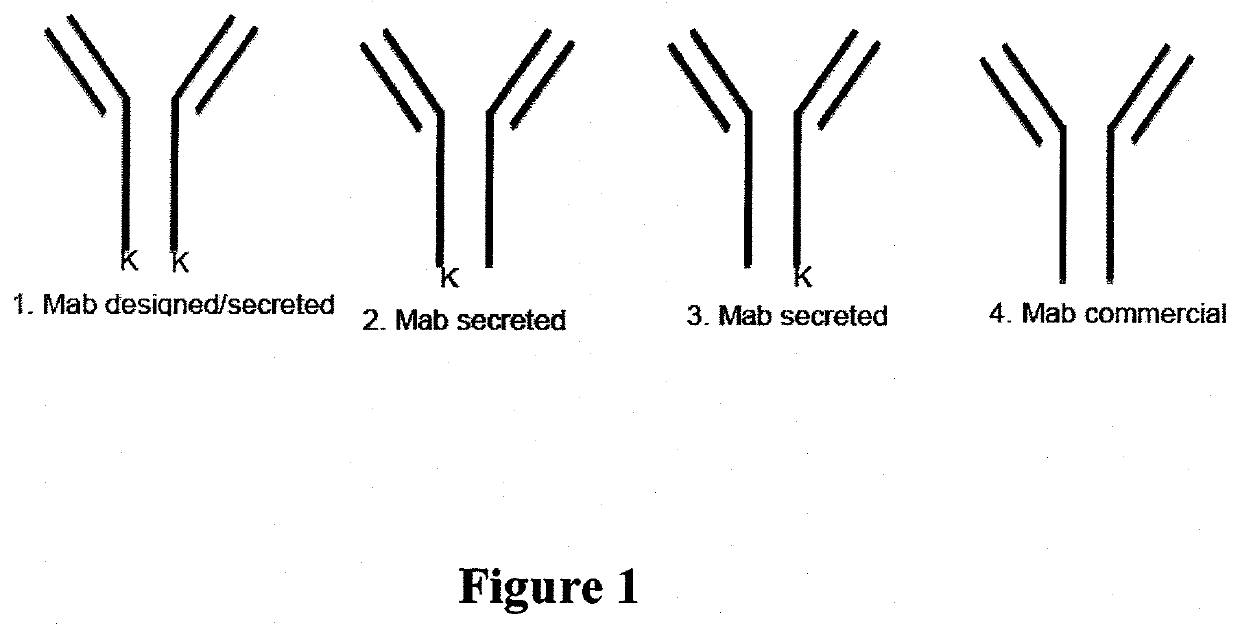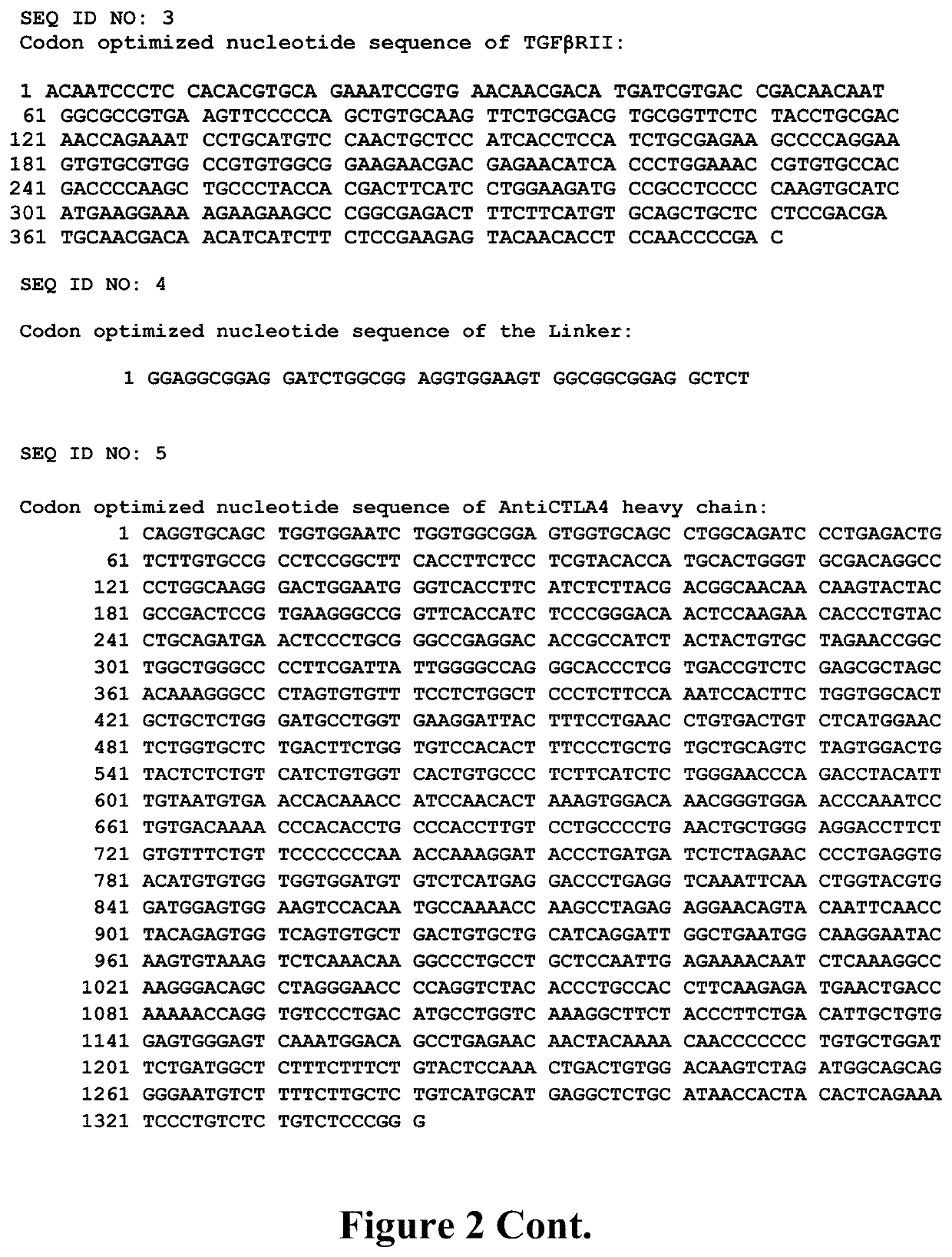Fusion immunomodulatory proteins and methods for making same
a technology of immunomodulatory proteins and fusion, which is applied in the direction of antibody medical ingredients, carrier-bound antigen/hapten ingredients, immunological disorders, etc., can solve the problems of pdl1 being a major obstacle and the majority of patients not benefiting from antibody treatmen
- Summary
- Abstract
- Description
- Claims
- Application Information
AI Technical Summary
Benefits of technology
Problems solved by technology
Method used
Image
Examples
examples
1. Anti-EGFR1-PD1 Fusion Protein Constructs for Cancer Targets
[0156]Anti-EGFR (Cetuximab) has been approved for squamous Head and Neck Cancer (locally or regionally advanced in combination with radiotherapy and metastatic after platinum based therapy) and EGFR expressing metastatic colorectal cancer (monotherapy in patients after failure of both oxaliplatin and irinotecan based chemo or in patients intolerant to irinotecan based chemo). Not applicable for colonrectal cancer (CRC) patients having K-RAS mutations.
[0157]Across various studies about 55-60% of mCRC patients respond to cetuximab in first line setting, however, this response too is transient (progression free survival (PFS) advantage of 1.5-2 mths) (EPAR). Significant numbers of patients either do not respond to cetuximab or become resistant to therapy. In the recurrent metastatic head and neck cancer, only 35% patients respond to cetuximab with chemo with only 2-3 month overall survival (OS) and (PFS) advantage.
[0158]Clea...
PUM
| Property | Measurement | Unit |
|---|---|---|
| temperature | aaaaa | aaaaa |
| length | aaaaa | aaaaa |
| homogeneity | aaaaa | aaaaa |
Abstract
Description
Claims
Application Information
 Login to View More
Login to View More - R&D
- Intellectual Property
- Life Sciences
- Materials
- Tech Scout
- Unparalleled Data Quality
- Higher Quality Content
- 60% Fewer Hallucinations
Browse by: Latest US Patents, China's latest patents, Technical Efficacy Thesaurus, Application Domain, Technology Topic, Popular Technical Reports.
© 2025 PatSnap. All rights reserved.Legal|Privacy policy|Modern Slavery Act Transparency Statement|Sitemap|About US| Contact US: help@patsnap.com



